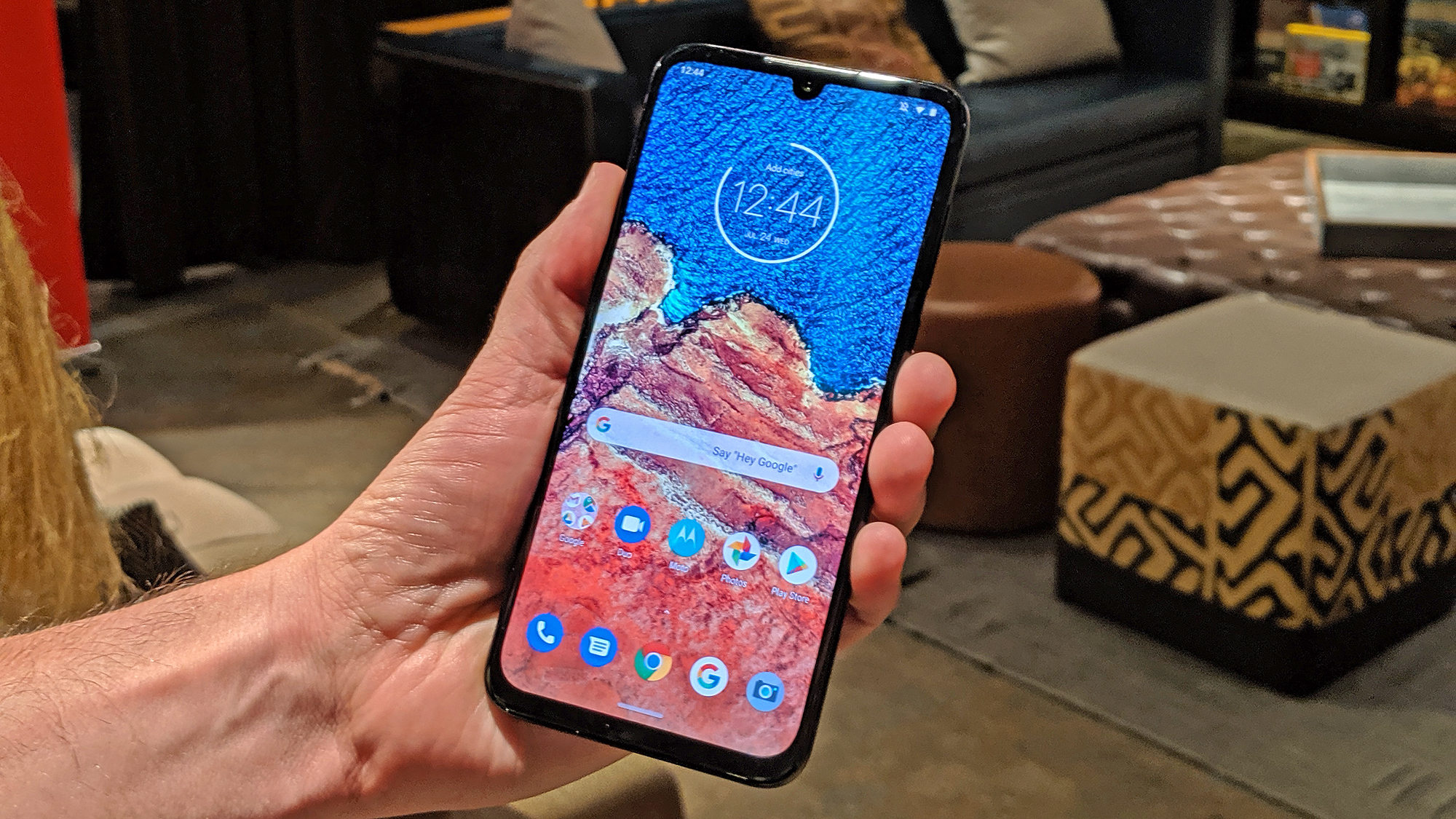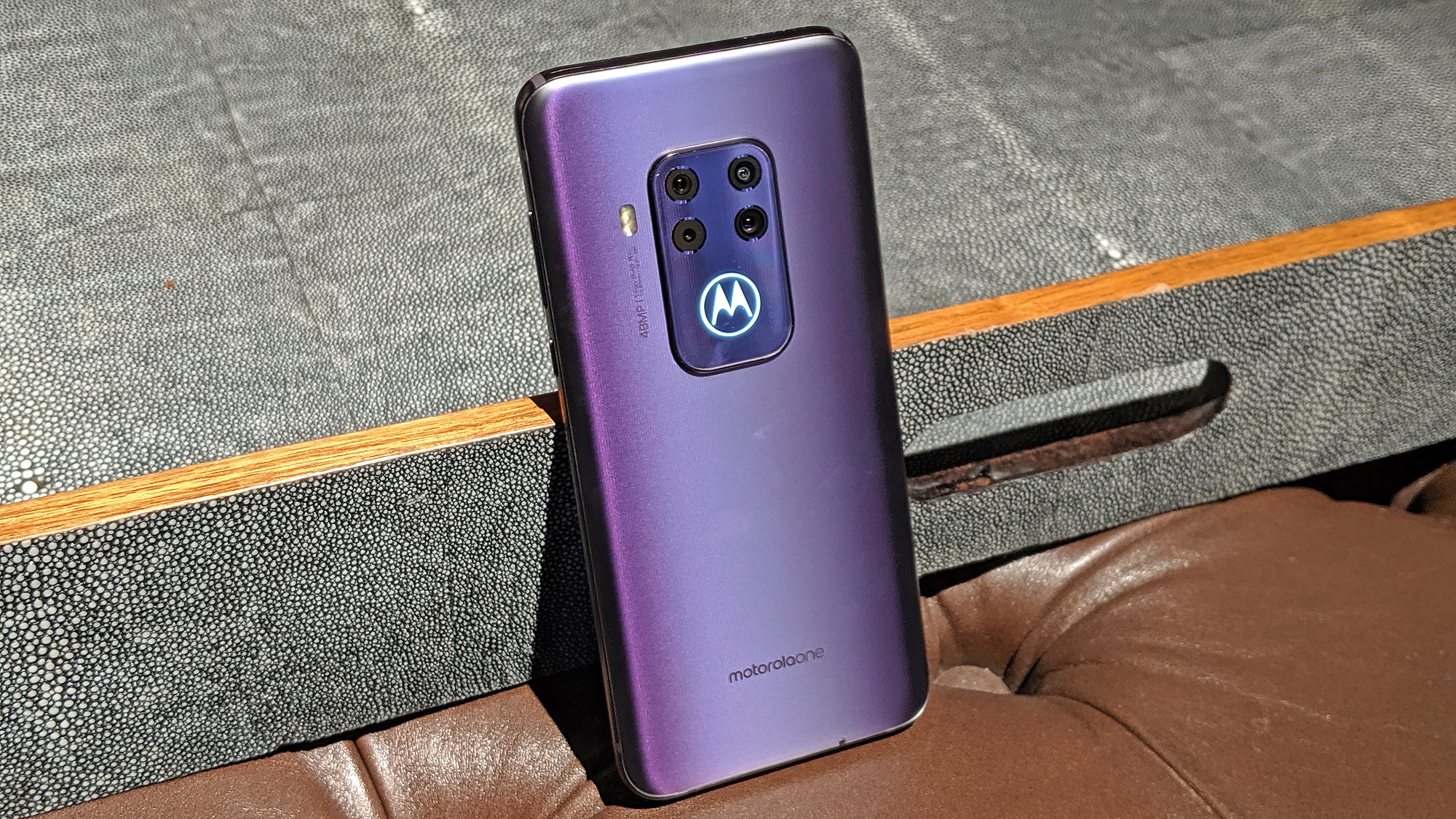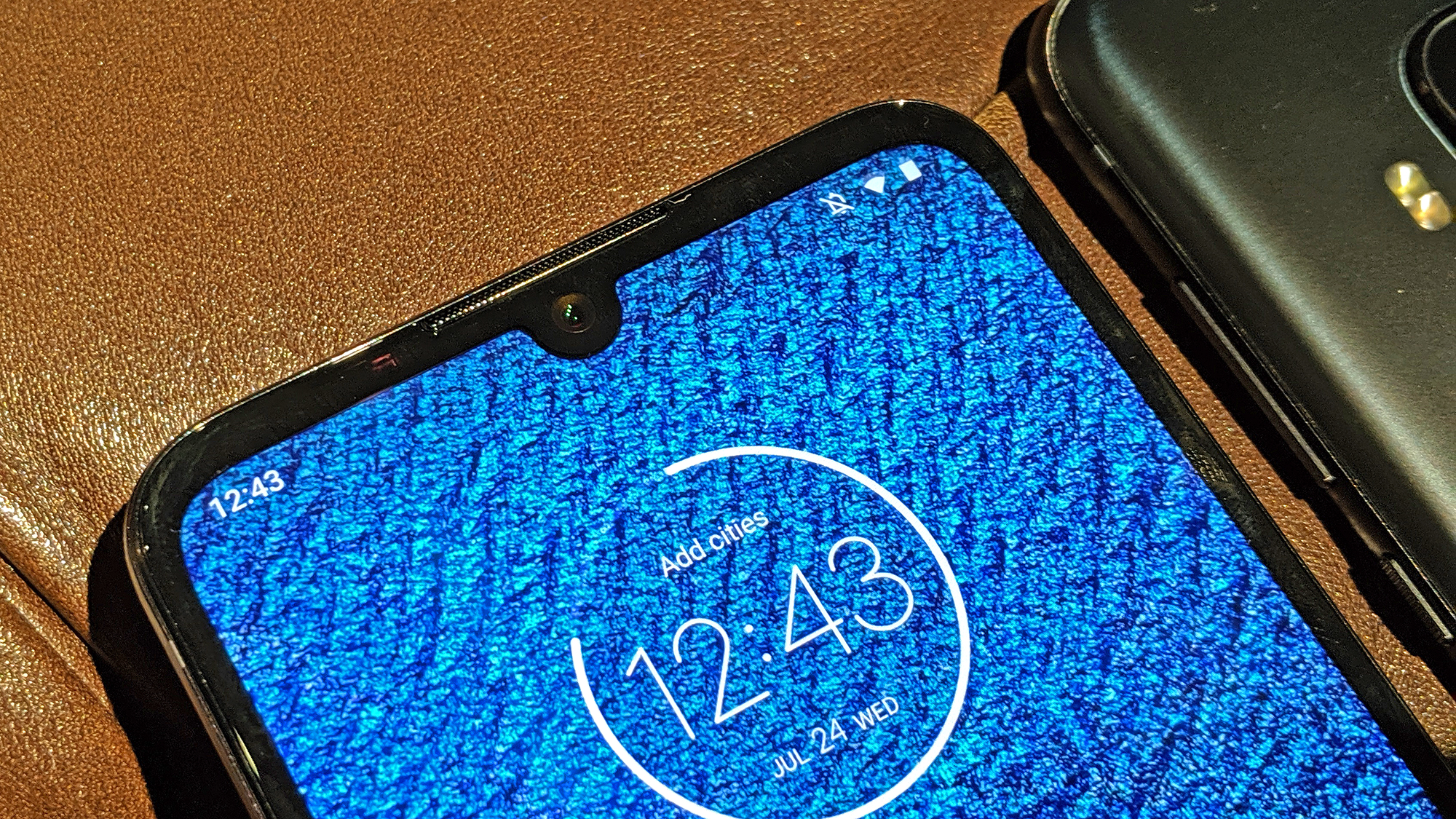Motorola One Zoom Hands-On Review: Moto’s Coming for the Pixel 3a
An outrageous camera in a modest midranger

Weeks after unveiling the Motorola One Action, Motorola is broadening its roster of midrange smartphones with the Motorola One Zoom.
Unveiled today (Sept. 5) at Berlin’s IFA trade show, the Motorola One Zoom does exactly what it says on the tin. Armed with four rear cameras — one of which is an 8-megapixel telephoto lens with 3x optical zoom, or 10x hybrid zoom — the new Motorola One variant can crop in closer than some flagships. (The latest Galaxy Note 10 models, for instance, top out at a 2x optical zoom.) Motorola’s new phone also benefits from a 48-MP primary lens outfitted with pixel binning technology, for superior low-light performance.
The Motorola One Zoom’s price? Just $449. That seems like a good deal four a quad-camera handset, though it is $50 more expensive than Google’s Pixel 3a, which is the leader in midrange imaging at the moment. The Motorola One Zoom begins shipping today unlocked from Motorola’s website, though it’ll only work on GSM carriers, like T-Mobile and AT&T. Here are our first impressions.
Distinctive exterior, compelling specs

With its 6.39-inch full-HD+ display, thick bottom bezel and U-shaped notch housing a front-facing camera, the Motorola One Zoom doesn’t especially stand out from the front. The back of the phone, however, is another story entirely.
There’s a prominent rectangular bump for the quad-camera array that also leaves just enough room for Motorola’s classic batwing emblem. This logo lights up when you receive a notification, or when you use the phone. It’s definitely a unique look — some would probably call it gaudy — though at least it separates the One Zoom from its budget contemporaries.
Another differentiator is the One Zoom’s satin glass, which incorporates a finish similar to brushed metal to stave off fingerprints. The One Zoom isn’t the first device to adopt this kind of material aesthetic, though Motorola’s application of it does make the handset pleasing to hold. The device comes in three colors: Electric Gray, Brushed Bronze and our favorite, Cosmic Purple.
| Motorola One Zoom Specs | Header Cell - Column 1 |
|---|---|
| Price | $449 |
| Display (Resolution) | 6.39-inch OLED (2340x1080) |
| OS | Android 9 Pie; Android One outside U.S. |
| CPU | Qualcomm Snapdragon 675 |
| Rear Cameras | Quad: 48-MP main (ƒ/1.7); 16-MP ultrawide; 8-MP telephoto with 3x optical zoom; 5-MP depth sensor |
| Front Camera | 25-MP (ƒ/2) |
| RAM | 4GB |
| Storage | 128GB |
| microSD Slot? | Yes |
| Battery | 4,000 mAh |
| Colors | Electric Gray, Cosmic Purple, Brushed Bronze |
Between the One Zoom’s aluminum frame and slabs of glass beats a Snapdragon 675 processor, 4GB of RAM and 128GB of built-in storage. That’s a bit beefier than the 670 chipset inside the Pixel 3a, as well as the Exynos 9609 Motorola has tapped for the cheaper Motorola One Action. The display is of the OLED variety, making the One Zoom one of the least expensive smartphones available today with such a panel.
Thankfully, Motorola has retained the 3.5-millimeter headphone jack for the One Zoom, as well as a MicroSD card slot for even more storage. The battery measures a whopping 4,000 mAh, and can recharge at moderately quick 18-watt speeds using the included TurboPower adapter.
All in on the camera
As you’d expect, it’s the Motorola One Zoom’s photography capabilities that the company is really leaning on to win over buyers. In addition to the quad-pixel 48-MP main sensor and 8-MP telephoto, there’s also a 16-MP, 117-degree ultrawide lens on tap, and a 5-MP depth sensor to assist with portraits. The front 25-MP camera also incorporates pixel binning for 6.25-MP selfies with improved light sensitivity.
Optical image stabilization aims to keep shots from the main and telephoto lenses blur-free, while Motorola’s Night Vision mode returns from the Moto Z4 to improve the exposure of low-light scenes. The selfie camera can also capture bokeh-effect portraits, even without the use of a second lens.
Motorola’s imaging technology has been an unfortunate weak point for the company over the years, especially when it comes to Moto’s cheaper phones. However, Moto’s never delivered a device quite like the One Zoom before, at such a competitive price point, so it will be exciting to see if the firm can turn things around.
Motorola One — not Android One

When Motorola announced the One Action last month, it marked a move away from Google’s Android One software — though interestingly, only in the U.S. In the rest of the world, Android One will continue to be featured on all of the company’s Motorola One-branded devices.
It’s unclear why Motorola decided to distance itself from Android One. Perhaps consumers were conflating the brands, though it’s safe to say most shoppers probably aren’t even aware of what Android One signifies. Phones with Android One software employ relatively pure, bloat-free Android builds, and are committed to regular software and security updates from Google, similar to what you get in Google’s own Pixel phones.
The problem with Motorola’s decision is that it figures to rob American Motorola One Zoom and One Action buyers of a year’s worth of software support. Without Android One backing, these handsets will only see one major OS upgrade, likely to Android 10, and likely next year. That’s disappointing, considering Android 10 just debuted for Pixel phones earlier this week.
In spite of Android One’s absence, Motorola’s software should still be pretty good — the company has always adopted a light touch on Google’s vision for Android as it is. However, the shift away from that software and security peace of mind definitely feels like a step in the wrong direction.
Outlook
Motorola’s repertoire of midrange phones is about to get a bit more crowded. Now, between the $299 Moto G7 and $499 Moto Z4, you’ll have the $449 Motorola One Zoom as well as the One Action, whose price has still yet to be confirmed.
The Motorola One Zoom looks to be a fair chunk of smartphone for the price, between its relatively powerful processor, large OLED display and quartet of cameras on the back. However, the just-announced Nokia 7.2 — which will cost $100 less when it debuts in the U.S. later this month — features a main camera capable of capturing the same 48-MP images as Motorola’s latest hardware. Nokia’s 7.2 also retains the Android One software Motorola ditched on the One Zoom, but packs an LCD display and slightly under-specced processor.
Ultimately, those on the hunt for a reasonably-priced smartphone in late 2019 or early 2020 are going to have many new options to choose from. Keep an eye out for our full review of the upcoming Motorola One phones in the coming weeks.
Sign up to get the BEST of Tom's Guide direct to your inbox.
Get instant access to breaking news, the hottest reviews, great deals and helpful tips.
Adam Ismail is a staff writer at Jalopnik and previously worked on Tom's Guide covering smartphones, car tech and gaming. His love for all things mobile began with the original Motorola Droid; since then he’s owned a variety of Android and iOS-powered handsets, refusing to stay loyal to one platform. His work has also appeared on Digital Trends and GTPlanet. When he’s not fiddling with the latest devices, he’s at an indie pop show, recording a podcast or playing Sega Dreamcast.
